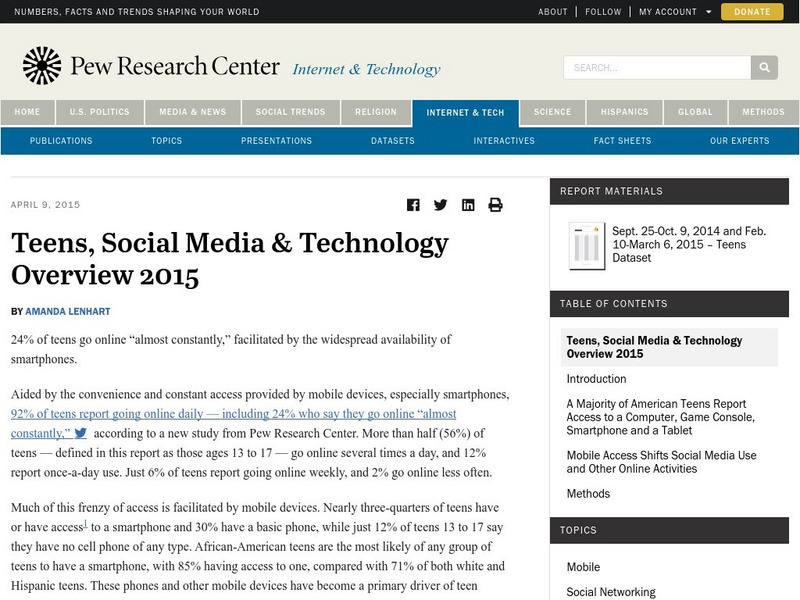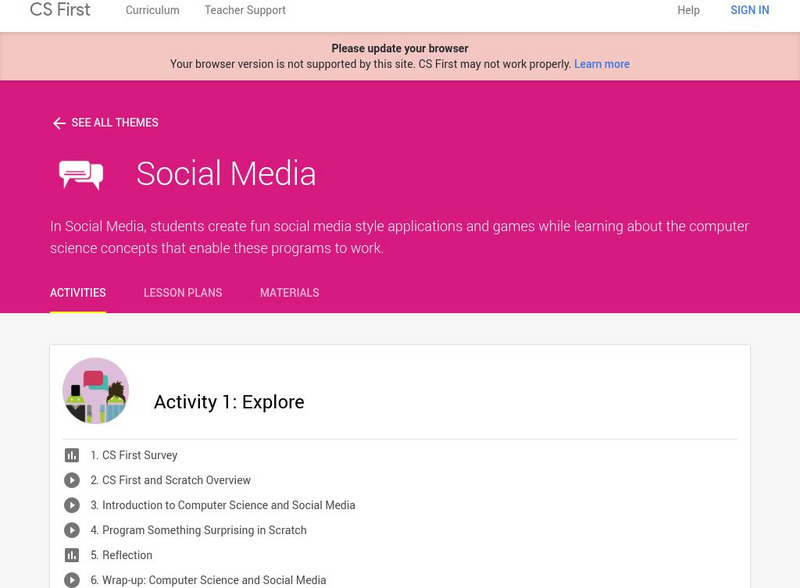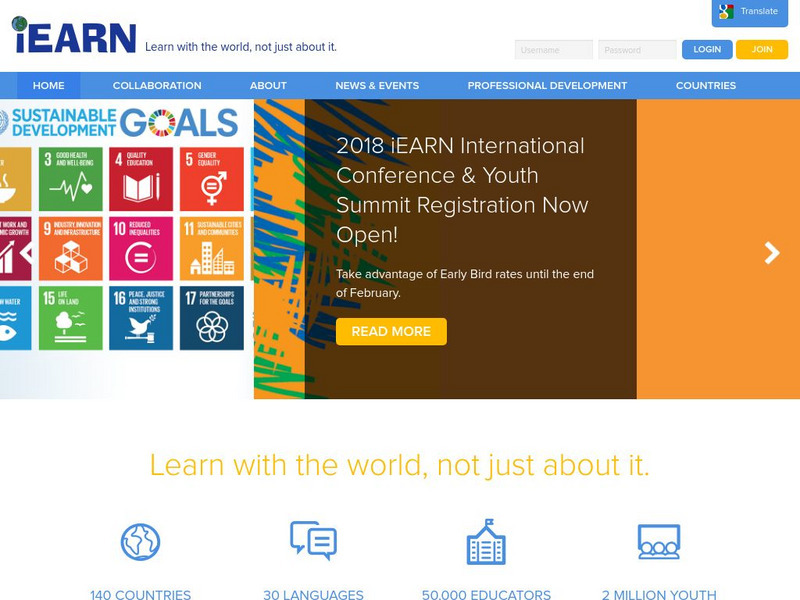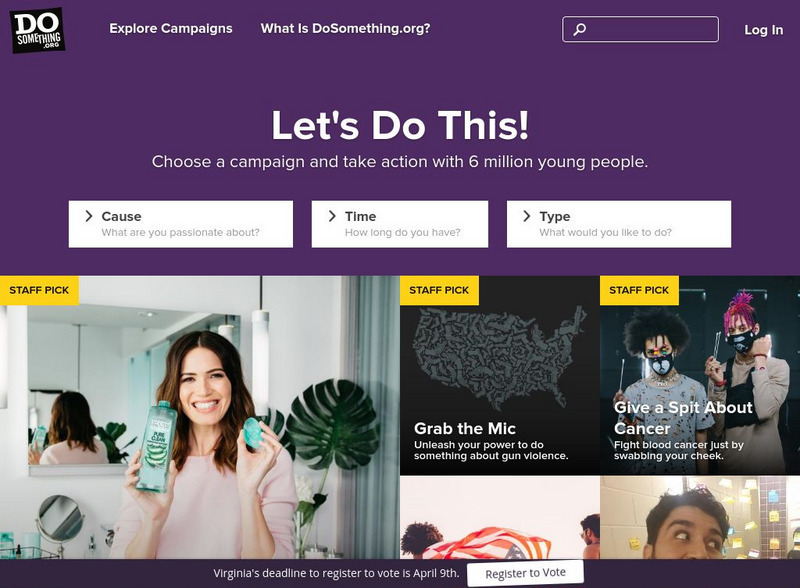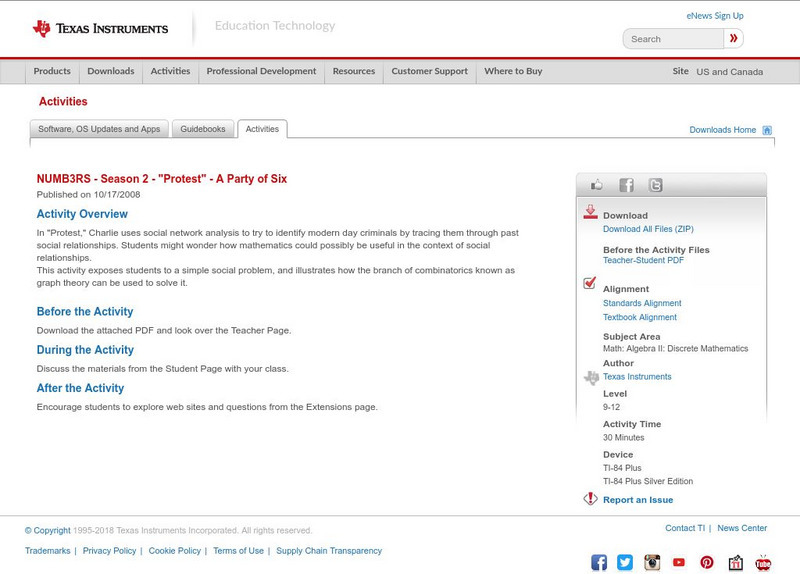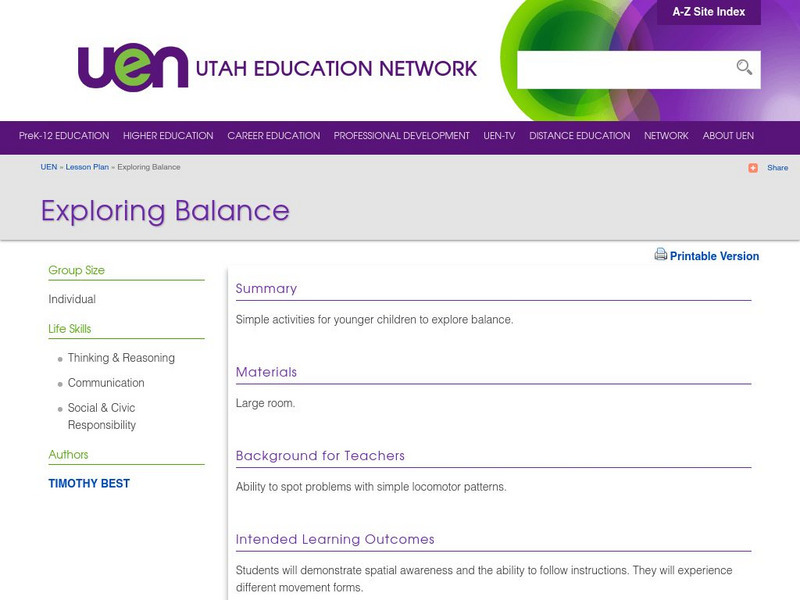TeachEngineering
Teach Engineering: Graphing Your Social Network
Students analyze their social networks using graph theory. They gather data on their own social relationships, either from Facebook interactions or the interactions they have throughout the course of a day, recording it in Microsoft...
Pew Research Center
Pew Research Center: Teens, Social Media & Technology Overview 2015
Discusses the findings from a research study on how teens use popular social media and social networking sites. The study looked at the different sites, tools, and apps that are being used, with Facebook ranking the highest. It also...
TeachEngineering
Teach Engineering: Start Networking!
To get a better understanding of complex networks, students create their own, real social network example by interacting with their peers in the classroom and documenting the interactions. They represent the interaction data as a graph,...
University of Minnesota
University of Minnesota: Transnational Social Networks: Historically & Today
This resource compares oral history and in-depth interviews from two different areas and periods of immigration to the United States. Its goal is to complicate notions of migration as a unidirectional and permanent activity.
Google
Cs Education at Google: Cs First: Social Media Theme
A set of eight activities that teach students basic computer science concepts using the programming language Scratch. Includes lots of additional supports for teachers. All materials are free and teachers sign in to create a class. This...
Louisiana Department of Education
Louisiana Doe: Curriculum Hub: Ela Guidebooks: Teenage Brain: Review Claims About Social Media
Review claims made in "Teens: This Is How Social Media Affects Your Brain."
TeachEngineering
Teach Engineering: Using Graph Theory to Analyze Drama
Students analyze dramatic works using graph theory. They gather data, record it in Microsoft Excel and use Cytoscape (a free, downloadable application) to generate graphs that visually illustrate the key characters (nodes) and...
TeachEngineering
Teach Engineering: Making the Connection
Graph theory is a visual way to represent relationships between objects. One of the simplest uses of graph theory is a family tree that shows how different people are related. Another application is social networks like Facebook, where a...
Media Smarts
Media Smarts: Your Connected Life: A Teen's Guide to Life Online [Pdf]
This guide is designed to help students who are just entering high school balance the demands their offline life with their digital one. The guide offers practical advice on a variety of activities kids like to do online, including...
Other
I*earn (International Education and Resource Network)
This nonprofit organization creates structured projects that facilitate engaged learning and youth making a difference on an International scale. Project areas include interdisciplinary topics such as the environment/science,...
Other
Literacy Works: Thanks to the Web, We're Alone Together and Loving It
While this resource was developed to support adult literacy learners, it can easily be used from junior grades and up. After reading an article about how people today interact on the Internet, students complete a variety of vocabulary...
Other
Do something.org
Do Something is a nationwide network of young people who know they can make a difference in their communities and take action to change the world around them. As part of Do Something, young people are asked what they want to do to make...
Utah Education Network
Uen: Choices and Consequences
Activity explores the concepts of "choices" and "consequences".
Texas Instruments
Texas Instruments: Numb3 Rs: Close Encounters
Based off of the hit television show NUMB3RS, this lesson has students explore how "closely connected" a network structure is. Framed in the context of a terrorist cell, students must find which setups would allow organizations to still...
TeachEngineering
Teach Engineering: Curb the Epidemic!
Using a website simulation tool, students build on their understanding of random processes on networks to interact with the graph of a social network of individuals and simulate the spread of a disease. They decide which two individuals...
Other
Videotron: Vigilance on the Net (French)
The Internet has its share of perils. You can help your kids stay safe online and steer clear of the dark alleys of the Internet by setting clear and concise rules and maintaining a frank and open dialogue about their activities and...
Other
Social Psychology Network: Jigsaw Classroom
The "official web site of the jigsaw classroom",- a cooperative learning technique which was developed by Elliot Aronson. The jigsaw approach is considered to promote better learning, improve student motivation, and increase enjoyment of...
Texas Instruments
Texas Instruments: Numb3 Rs: A Party of Six
Based off of the hit television show NUMB3RS, this lesson use graph theory to examine social network analysis. Students form complete graphs with different colored edges (representing acquaintance or non-acquaintance), and determine how...
Other
Internet Society: A Brief History of the Internet
A brief history of the internet, written by those who were involved in the development evolution of the Internet. This history revolves around four distinct aspects: the technological evolution, operations and management aspect of a...
Utah Education Network
Uen: Exploring Balance
During this lesson plan, students will engage in many activities that require them to use their balance.
Utah Education Network
Uen: Lesson Plan: You Were There!
Comprehensive activity plan for elementary-level students that uses literature to enhance social studies content. Students read a work of historical fiction about the Boston Massacre (My Brother Sam Is Dead by James and Christopher...
A&E Television
History.com: 6 Inventions That Transformed Housework
Electric appliances large and small promised reduced drudgery. Most people take washers and refrigerators for granted today, a century ago, these machines revolutionized people's daily lives. The introduction of running water and...
Khan Academy
Khan Academy: Sociology of Participation
Read the passage "Sociology of Participation" and then complete the six-question quiz.

